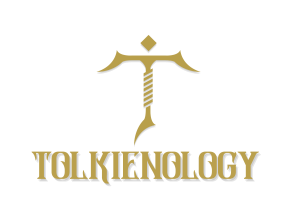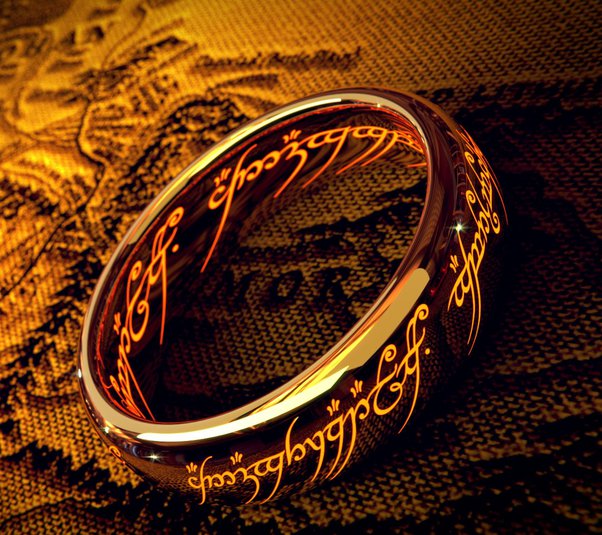Origins of the One Ring – history and ideas behind it
The One Ring, also known as the Ring of Power, is a central element in J.R.R. Tolkien’s Middle-earth legendarium and is a symbol of the ultimate power and evil in his The Lord of the Rings trilogy. In this article, we will delve into the history, ideas behind, and the meaning of the One Ring and its role in controlling all other rings and binding them in darkness.
The history of the One Ring dates back to the Second Age of Middle-earth, when the Dark Lord Sauron crafted it in the fiery depths of Mount Doom. Sauron, a fallen Maia, intended to use the ring to control and enslave the inhabitants of Middle-earth. The ring was created using a special metal, mithril, and was inscribed with an Elvish spell that enabled Sauron to communicate with and control the other nineteen rings of power he had created and distributed to various races, such as Dwarves, Elves, and Men. The purpose of these rings was to give their possessors immense power and influence over their respective races. However, unbeknownst to them, the rings were actually extensions of Sauron’s will and he used them to corrupt and control the free peoples of Middle-earth.
Sauron’s plans for domination were eventually foiled by a coalition of Elves and Men, led by Isildur, the son of Elendil. In the decisive Battle of Mordor, Isildur cut the One Ring from Sauron’s finger, causing his physical form to dissipate and his power to wane. Isildur, however, was unable to destroy the ring as he was tempted by its power and instead kept it for himself. This act would have far-reaching consequences for Middle-earth, as the ring remained a powerful and corrupting force, drawing people to its power and leading to the eventual downfall of the Kingdom of Gondor and the loss of the ring for many generations.
The ideas behind the One Ring can be seen as a commentary on the dangers of power and the corrupting influence it can have. The ring represents the ultimate power, and its power is amplified by the spell inscribed on it, which gives its wielder control over the other nineteen rings. This idea is reflective of the idea of the “Ring of Gyges,” a philosophical concept put forth by Plato in his book, “The Republic.” In this story, a shepherd discovers a ring that makes him invisible and he uses this newfound power to indulge in his most wicked desires, ultimately leading to his downfall.
The One Ring also serves as a symbol of the struggle between good and evil in Middle-earth. Its creation was a manifestation of Sauron’s evil, and its existence was a constant threat to the free peoples of Middle-earth. Its power corrupted those who wielded it, leading them to do evil and furthering Sauron’s control over Middle-earth. In contrast, the quest to destroy the ring represented the struggle of the forces of good to overcome the evil it represented and restore balance to Middle-earth.
The One Ring is also a symbol of unity and friendship. Throughout their journey, Frodo and his companions are united in their quest to destroy the ring, and they form strong bonds of friendship and loyalty along the way. The ring represents the importance of working together to overcome obstacles and achieve a common goal.
The One Ring’s power to control the other nineteen rings and bind them in darkness is a testament to its immense power. By having control over these other rings, Sauron was able to exert his influence over the races of Middle-earth and bind them to his will. The ring was a physical manifestation of Sauron’s power and represented his ultimate control over Middle-earth. The fact that the ring was able to corrupt those who wielded it, leading them to do evil, shows just how powerful its influence could be.
In conclusion, the One Ring is a complex and powerful symbol in J.R.R. Tolkien’s Middle-earth legendarium, embodying the dangers of power and the struggle between good and evil. Its creation during the Second Age marked the start of Sauron’s attempts to control and enslave the free peoples of Middle-earth, and its existence represented a constant threat to their freedom. The ring’s power to control the other nineteen rings and bind them in darkness highlights its immense power, and the corrupting influence it had on those who wielded it. The quest to destroy the ring, undertaken by Frodo Baggins and his companions, symbolized the struggle of good to overcome evil and restore balance to Middle-earth. The One Ring serves as a cautionary tale about the dangers of unchecked power and the corrupting influence it can have. Its enduring popularity is a testament to the timeless themes of good versus evil and the struggle for freedom that it represents.







